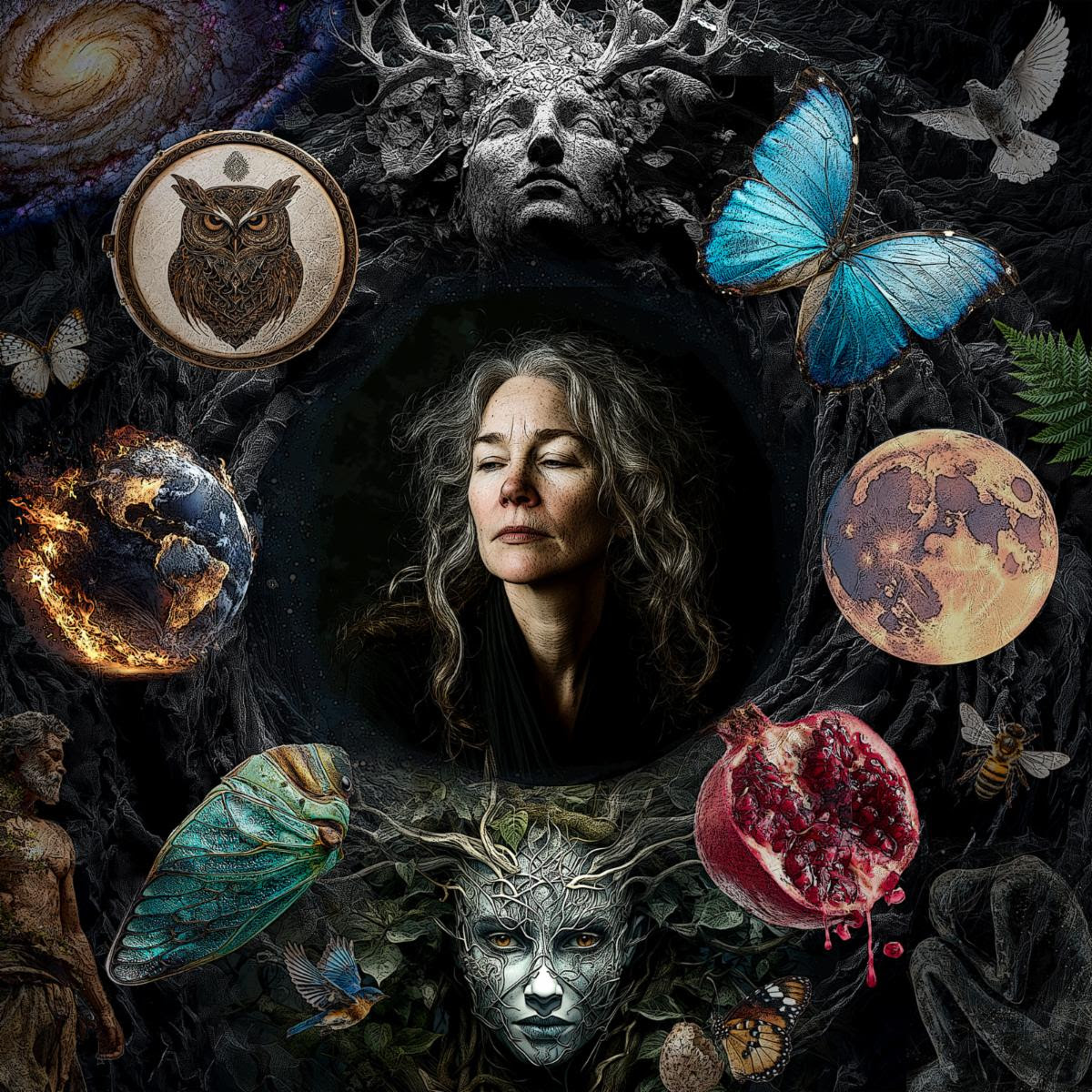Soulcraft Musings
Today, January 20, 2017, we inaugurate Soulcraft Musings, a new offering from Animas Valley Institute (see below). This is the same day America inaugurates a new president, a cultural upheaval currently mobilizing thousands of response teams worldwide. On this day we commence our humble project of Soulcraft Musings in support of the deepening, diversification, and flourishing of all life. At this time in the world, may we all inaugurate actions and projects that collectively give birth to a life-enhancing society.

Friday, January 2, 2026
The Story of Animas
How We Learned to Guide the Descent to Soul
Part I
This is the first part of a three-part Musing (one per week).
Since the early 1980s, my audacious Animas colleagues and I have been learning how to navigate and guide the now rare but perennial journey of soul initiation. We’ve been fashioning a contemporary, Western, nature-based methodology for metamorphosis. We’ve crafted new and modified maps, models, principles, practices, and ceremonies by which to guide the descent to the underworld of soul for the purpose of uncovering the mystery at the heart of each human life.
Often it feels like we’re simply remembering what all people have known from the beginning of the human story, mythic patterns and motifs lost and forgotten ages ago, yet with traces that can be unearthed like hidden treasure in the shadowed corners of our own psyches or in the form of memories stored in the land itself. Sometimes it feels like we’ve conjured something ancient and archetypal from the dance we’ve found ourselves performing without forethought while in communion with wild places and wild humans.
At other times, it seems like Mystery is taking us for a ride on an indeterminate evolutionary trajectory never before traversed, more like passengers than steersmen.
Revelatory Beginnings
It could be said that our story of (re)discovery began with my first four-day vision fast, in August 1980, at an altitude of 11,000 feet in a glacier-carved granite gorge in the late summer mountains of northern Colorado, self-guided and in solitude, but with the invaluable support of an early handbook written by two of my teachers, Steven Foster and Meredith Little. There, among untamed lakes, streams, and summits, I met a green-robed Zen monk cleverly disguised as a spruce gazing out among the still surface of an alpine lake. With an eloquent wave of his hand, the monk called my attention to a butterfly several yards to my left who slowly flew toward me, brushed my face with her wing and, in the same moment, uttered my true name. She told me I must learn to weave cocoons of transformation for my people (from caterpillar-like adolescence to butterflying adulthood).
One night during that first vision fast, a dream suggested the Animas Valley of southwest Colorado as the place to make my home and to begin my real work. So I did. Both. I had recently completed a year of post-doctoral training as a holistic and transpersonal psychotherapist after having recklessly abandoned my meteoric but brief career as a university-based research psychologist exploring non-ordinary states of consciousness. You might say I left the lab in order to have direct experience in the field … of life. Following my time on the mountain, I was a nearly penniless but enraptured wanderer carrying the three precious gems of revelation, youth, and freedom. (This part of the story is recounted more fully as the prologue to Soulcraft: Crossing into the Mysteries of Nature and Psyche.)
The Birth of Animas Valley Institute
For the next ten years, I grew a psychotherapy practice and, a few times a year, guided a contemporary form of the pancultural vision fast. My unconventional design for this wilderness-based ceremony blended a variety of influences from depth psychology, poetry, and Western mystical traditions as well as from the universal symbols and practices of a particular class of initiatory journeys — those undertaken not by children on the cusp of adolescence nor by teens bravely affirming and demonstrating their independence from their parents, but by mature seekers of gnosis. Under the banner of “Animas Valley Institute,” my early guiding partners [1] and I held evening meetings with groups of locals, preparing them, over a period of several weeks, for a four-day fast in the middle of an eight-day expedition into a remote and wild corner of the Southwest mountains or desert canyons. Although the ceremonial form we enacted was a vision fast, this was not a generic rite of passage; it was something more mysterious, rare, wild, and hazardous.
In the late ‘80s, my colleagues and I redesigned our “Animas Quests” to be an integral 10–day ceremony (later, 12– or 14–days) so to accommodate people from other regions. We also began to design a variety of new, shorter immersions (five and eight days) into the mysteries of nature and psyche, intensives and pilgrimages without fasting or multi-day solos but infused with soul-revealing practices such as soulcentric dreamwork, council practice, trance rhythms and dance, conversations with non-human others, deep imagination, group ceremony, self-designed individual ceremony, shadow work, poetry immersions, expressive arts, and a great variety of solo activities while wandering on the land and in communion with the others.
Guiding the Descent to Soul
It became clear during this first decade that the primary work to which I was called was not psychotherapy, neo-shamanism, ascent-oriented spiritual practices aimed at transcendence or enlightenment, rites of passage, or even the guiding of vision fasts as a specific ceremony. Rather, my outlandish and perhaps heretical calling was to weave cocoons — to facilitate the ancient/ modern journey to the enigmatic core of the individual human psyche where one might encounter a profound and unique mystery or, as poet David Whyte puts it, “the truth at the center of the image you were born with.” This truth arrives in the form of a startling yet somehow unsurprising revelation of destiny — and bestows an utterly new compass to steer by. My partner Geneen Marie Haugen and I came to refer to this truth as a person’s “mythopoetic identity.” (In my book, The Journey of Soul Initiation, you’ll discover why.) The uncovering of this pre-cultural, pre-linguistic mystery of the individual psyche is the experience I call “soul encounter.” I came to realize, in other words, that my core work was a contemporary rendering of the initiatory journey undertaken by seekers from all healthy cultures from all times — the descent to the underworld of soul with the intent to discover, be shapeshifted by, and then embody one’s mythopoetic identity (the weaving of cocoons being one aspect of my own). I named this work Soulcraft.
I came to understand the soul-oriented underworld journey as a necessary element of the transformation from psychological early adolescence — beyond which most contemporary people never progress — to the true adulthood of visionary artistry. Such artistry is perhaps what the world most needs now and might very well be the key to the success of what cultural historian and theologian Thomas Berry called the Great Work of our time, or what deep ecologist and Earth activist Joanna Macy named the Great Turning.
In the early ‘90s, I inaugurated a training program for those called to serve as nature-based soul-initiation guides, a training sequence that became, in 2002, our Soulcraft Apprenticeship and Initiation Process, co-designed with several colleagues.
Photo: Dream of the Underworld – One [Collage]. Doug Van Houten
References
[1] My early guiding partners included Steve Zeller, Jesse Zeller, and Kymberly Hurst Johnson.
To read previous musings click here.

